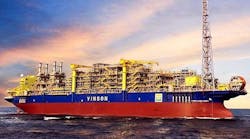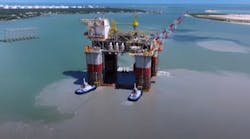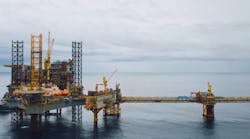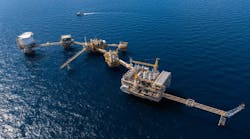David Paganie,Chief Editor
Governments thatdepend on royalties and other forms of revenue from the oil and gas industry are reassessing the value of their fiscal systems, as competition heats up for a share of the influx of new capital investments.
In the US, Gulf of Mexico resource development has provided a steady stream of income to the operators and government alike. However, in recent years, some of the major and independent operators have shifted capital to US onshore shale plays in favor of short-cycle returns, while others have deferred investments to other proven and emerging offshore regions, such as Mexico, Guyana, and Brazil. This, along with lower investments during the downturn, has led to a reduction in government take from US offshore leases.
A recent study by IHS Markit commissioned by the US Department of the Interior, “2018 Comparative Assessment of the Federal Oil and Gas Fiscal Systems,” concludes that the US may need to consider new measures to improve the value proposition of its fiscal system when compared to other regions that are competing for a share of upstream oil and gas investments.
The study compares the US GoM shallow water and deepwater with select international regions. Similar oil and gas field sizes in peer group countries were analyzed using financial metrics, including government take, internal rate of return, and net present value per barrel of oil equivalent. The report also reviews alternative GoM fiscal terms.
The competitiveness of oil and gas investments in a region hinges on many factors, including the cost of exploration and development, prospectivity and the scale of the resource base, fiscal terms, and other considerations.
The study shows that US GoM leasing activity has improved each year since bottoming in 2016, but it’s unclear if this can be attributed to the fiscal measures that were introduced by the US government in 2017; i.e., corporate income tax reduction and royalty rate reduction for shallow water.
Within the US, the study finds that structural industry changes combined with cyclical cost factors have led to a 38-41% decline in shallow water and deepwater project costs, respectively. As a result, most deepwater projects are cost-competitive and close the gap with tight oil.
Compared to the international peer groups selected for the study, the US ranks second or third-lowest in terms of government take.
From a resource-base perspective, the US GoM is a mature province with a significant portion of the undiscovered technically recoverable resources lying in Lower Tertiary formations with high pressure and high temperature reservoirs. These require higher than average exploration and development costs.
The report suggests that the comparative ease of developing resources in some areas offshore Brazil and in the Guyana deepwater basin gives these two regions a competitive edge over the US and other countries included in the study. In the meantime, Brazil and Mexico have attracted significantly higher investment in their offshore sector via signature bonuses and work commitments.
The study finds that, overall, US GoM oil projects are competitive within the peer group with the shallow water being the most competitive among the fields considered in the study. The projects offer competitive rates of return, but the shelf has limited resources, so the best case would be a tieback to an existing platform.
The study suggests that improvements to the design and application process for shallow water discretionary royalty relief could create an incentive to develop small discoveries that could use existing infrastructure.
The study also finds that the current US deepwater GoM fiscal system offers conditions that should promote investment in oil exploration and development. However, compared with its peers, US deepwater projects are ranked below average, based on their return on investment and expected monetary value.
Among the deepwater fiscal alternatives that improve the rate of return to investors, the study suggests that categorical royalty relief would be the most impactful option.
Meanwhile, the US offshore wind industry is targeting fiscal fitness by leveraging expertise from the domestic offshore oil and gas industry and from developed wind markets outside the US. Shell, known for its wide-ranging international oil and gas projects, is leading the way in the US. The developer is calling on the federal government to promote more lease opportunities at a faster pace to encourage more investors to come forward.
Offshore met with John Hartnett, US Wind Business Opportunity Manager for Shell New Energies, to discuss the company’s strategy for US offshore wind energy development, and the synergies with the oil and gas industry. Shell’s understanding of the complexities of offshore development, construction, and operations is critical for success, as is understanding the needs of other commercial and environmental stakeholders, John says. The full interview begins on page 28.




